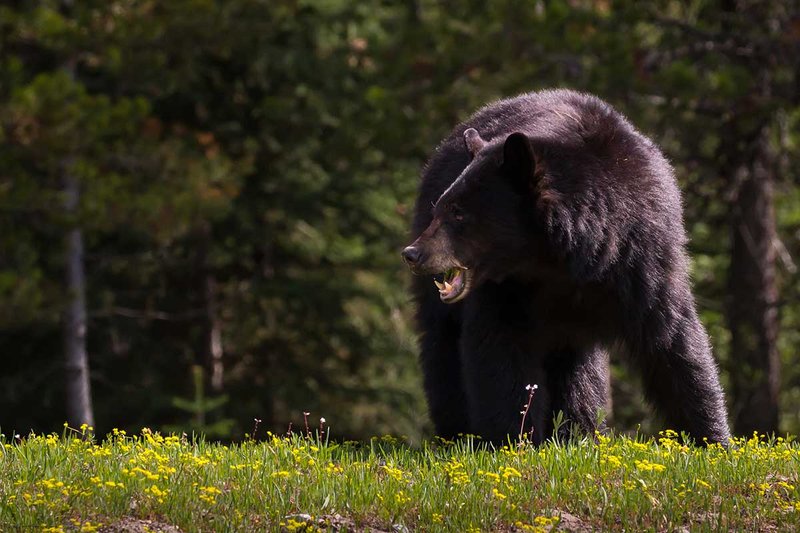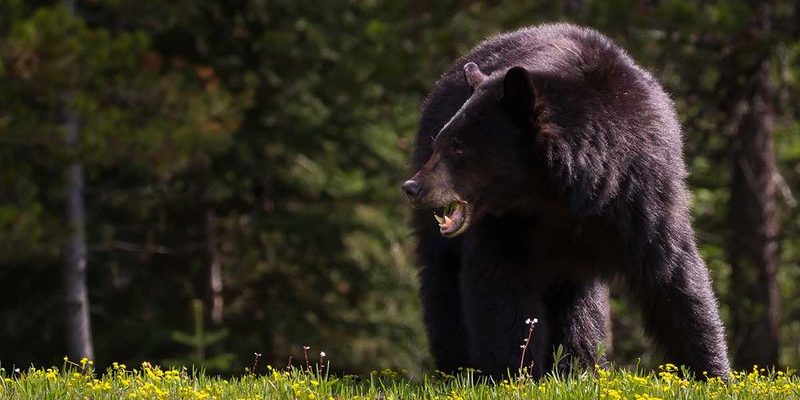
Just like preparing for a thunderstorm or a flat tire, being aware of your surroundings and having a plan can keep you safe. Bears may seem intimidating, but with the right information and approach, you can navigate a bear encounter calmly. Let’s dive into the essentials of handling a bear encounter, so the next time you’re in the wild, you’ll feel ready and confident.
Understanding Bear Behavior
To handle a bear encounter effectively, it’s crucial to understand bear behavior. Just like us, bears have personalities and moods. Some bears may be curious, while others can be defensive, especially if they feel threatened or are with their young. Knowing how they usually react can help you get a grip on the situation.
Bears can be divided into three main species in North America: black bears, brown bears, and polar bears. Each type has different behaviors. For instance, black bears are often more timid and may retreat if they see you, while brown bears can be more aggressive, particularly if they’re surprised. If you recognize the type of bear and understand what it’s likely to do, you’ll be better equipped to respond appropriately.
So, you might be wondering, how do you identify the type of bear? Black bears are typically smaller, have a straight face profile, and are known for their black fur (though they can be brown or cinnamon as well). Brown bears, often called grizzlies, are larger and have a distinct hump on their shoulders. Knowing these details can help you judge how to act when you’re up close and personal.
Stay Calm and Assess the Situation
When you spot a bear, the first thing to do is to take a deep breath and stay calm. Your heart might race, but panicking can make things worse. Bear encounters can happen quickly, and the way you react is key. Take a moment to assess the situation.
Ask yourself: Is the bear aware of you? Is it approaching, or is it simply going about its business? If the bear seems unaware or uninterested, you might just need to quietly back away. It’s like when you accidentally bump into someone at a crowded party; sometimes, it’s best to just excuse yourself and move on.
If the bear notices you and begins to approach, you’ll need to be ready for the next steps. Bears are often more curious than aggressive, but their size and strength make any encounter potentially dangerous. That’s why assessing their behavior is essential. Is it walking towards you or taking a more defensive stance? Understanding these cues can guide your response.
Making Your Presence Known
If a bear sees you and starts to approach, it’s time to let it know you’re a human, not a threat. Making your presence known can prevent the bear from feeling cornered or threatened. Speak calmly and assertively, using a strong voice to say things like, “Hey bear!” or “Go away bear!” It’s a bit like talking to a lost dog—your tone matters.
Don’t shout or wave your arms wildly; that can startle the bear. Keep your hands visible and maintain eye contact, showing that you’re not a prey animal. It’s important not to run away. Running can trigger the bear’s instinct to chase, so standing your ground is key.
At this moment, some people might feel tempted to take a selfie or video. Let me explain—resist that urge! Your safety is the priority. Keep your focus on the bear and prepare for the next steps.
Back Away Slowly
If the bear doesn’t seem aggressive and is moving away, it’s your cue to back away slowly. Do this without turning your back on the bear; this can be a little tricky, but it’s essential. Turning away can be interpreted as a sign of fear or vulnerability, provoking the bear.
As you back away, maintain your calm demeanor and keep talking gently. It’s like walking away from a conversation that’s become uncomfortable. Keep your movements fluid—no sudden jerks or quick turns. This way, you won’t catch the bear’s attention in a way that makes it feel threatened or curious.
Move towards a trail or open space, avoiding dense brush or areas with limited visibility. You want to ensure you have an escape route while continuing to keep an eye on the bear. Remember, patience is key here; it’s all about creating distance.
What to Do If a Bear Charges
In some rare cases, a bear might charge at you. This can be heart-stopping, but understanding bear behavior can help you respond correctly. First off, don’t panic. It’s important to differentiate between a bluff charge and a real attack. Bears often charge as a way to assess a threat.
If the bear is charging but not showing aggression (like snapping its jaws), stand your ground and prepare to use bear spray if you have it. Bear spray is a highly effective tool and can deter a bear from getting too close. Aim for the bear’s face when spraying, as this can help create a barrier.
On the other hand, if a bear makes contact and it seems aggressive, fall to the ground and play dead. This might feel counterintuitive, but lying flat on your stomach with your hands and arms protecting your neck can signal the bear that you’re not a threat. Stay silent and still until the bear leaves.
Remember, every situation is unique, and it’s tough to predict what a bear will do next. Always rely on your instincts and knowledge of bear behavior to help guide your actions.
Using Bear Spray Effectively
Let’s talk about bear spray—it’s like the pepper spray of the wilderness. Carrying bear spray can be a real lifesaver if you find yourself close to a bear. But here’s the thing: it’s not enough to just carry it; you need to know how to use it effectively.
First, make sure your bear spray is easily accessible, preferably on a belt or in an exterior pocket. You don’t want to waste time digging through your backpack when a bear is nearby. Familiarize yourself with how to unlock the spray before you need it.
When it’s time to use it, aim for the bear’s face and create a cloud in front of you, not directly at it. This way, if it charges, the bear will encounter the spray. It’s like setting up a barrier—it gives you time to escape while deterring the bear.
Don’t forget: bear spray has an expiration date. Check it regularly and replace it if necessary. It’s like making sure your fire extinguisher works; you want to be prepared just in case.
Preventing Bear Encounters
Now that we know what to do if you encounter a bear, let’s shift focus to prevention. Honestly, the best way to handle a bear is not to see one in the first place. Here are some tips to keep in mind when you’re hiking or camping in bear country:
- Make Noise: When traipsing through the woods, chatter with your friends or sing aloud. This alerts bears to your presence, reducing the chances of surprise encounters.
- Travel in Groups: Bears are less likely to approach a larger group of people. It’s also safer and more fun to hike with friends.
- Secure Food Properly: Store all food in bear-proof containers or hang it in trees away from your campsite. Bears have a fantastic sense of smell, and they can be drawn to food even from miles away.
- Avoid Early Mornings and Dusk: Bears are often more active during these times, so try to plan your hikes for later in the day.
Taking these steps can help reduce the chances of an encounter, allowing you to enjoy the beauty of nature without the worry of what might happen.
Encountering a bear can feel daunting, but knowing how to react can keep you safe and calm. By understanding bear behavior, making your presence known, backing away, and having bear spray at the ready, you can navigate these moments confidently.
Remember, prevention is your best bet. Being aware of your surroundings and taking simple steps can help you minimize the chances of meeting a bear. Next time you head out into the wild, keep these tips in mind, and you’ll be well-prepared for whatever nature throws your way. Enjoy your adventures, stay safe, and embrace the beauty of the outdoors!

